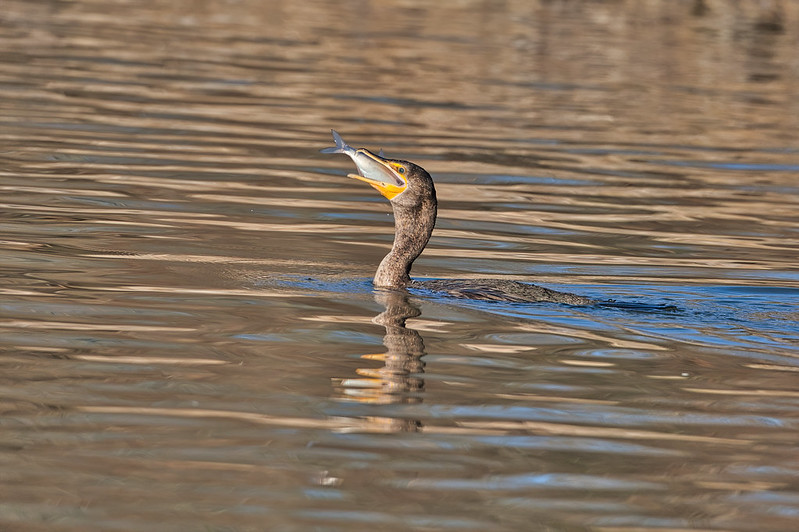I had the opportunity to photograph a Double-crested Cormorant in action while it was swallowing a shad at the Robert S. Kerr Reservoir, near Sallisaw, Oklahoma. These birds are excellent hunters, diving for fish with impressive speed and precision. Photographing them, however, presents a unique challenge.

Cormorants are not slow eaters. Once they surface with a fish, they waste no time. Within seconds, the fish is swallowed whole. The reason for this urgency? Gulls. These opportunistic birds are constantly hovering overhead, ready to steal any fish a cormorant catches.
Timing is crucial when capturing a cormorant’s feeding behavior. You need to anticipate the moment when the bird will resurface after a dive. Once it does, you’ve got a matter of seconds to get the shot before the fish disappears. This photo, where the cormorant is about to gulp down the shad, represents one of those fleeting moments of success.
To photograph this Double-crested Cormorant:
- I kept my camera at the ready, anticipating when the cormorant would emerge from the water.
- Patience is key. It can take several dives before a cormorant comes up with a fish.
- I set a high shutter speed to capture the fast movements, ensuring the action would be crisp.
- I used continuous shooting mode to increase the chance of catching the bird in mid-swallow.
The backdrop of calm water, with the bird’s sleek body and the sudden appearance of a fish, creates a dynamic scene. It’s a visual reminder of the split-second timing that makes wildlife photography both challenging and rewarding.
The Robert S. Kerr Reservoir is an excellent location for photographing a wide range of waterbirds, including these cormorants. Their hunting behavior, while hard to capture, offers some of the most exciting moments for a photographer.
Next time you’re out photographing birds, keep an eye on the water. You might catch a moment like this, but be ready to move fast, just like the cormorants do.
